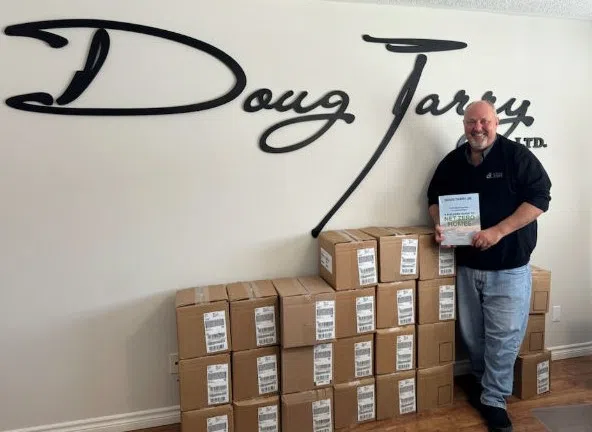
From award-winning homebuilder to an entirely new chapter in his life, Doug Tarry says the arrival last week of A Builders Guide to Net Zero Homes has been a four-and-a-half year journey.
Titled, From ‘Bleeding Edge to Leading Edge,’ the book is not so much about building a home from the ground up, but rather how homebuilders can make the world a better place.
Audio PlayerThere are plenty of how-to chapters in the book balanced with a heaping side order of philosophy and personal anecdotes.
Take for example some of the topic headers: “How to Lean it Out: Is Your Baby Ugly?
How about, “Cutting the Ends Off the Roast Beef.”
And all about “The Peanut Butter Incident.”
It’s far from your typical Coles Notes version of homebuilding for dummies.
It goes far beyond that into the direction homebuilders should be heading into the future.
For Tarry it revolves around two commandments.
Audio PlayerTarry observes the industry has come a long way since he first started building homes.
“Now people are actually talking about Net Zero. And ironically about the book, although it is A Builders Guide to Net Zero Homes, but it is actually about why Net Zero is the wrong goal.
“I think we have to look beyond that, more holistically. We’re actually talking about a concept in the book called Life Ark.
“Which is, what happens when the power goes out?”
It comes down to thinking differently, stresses Tarry. And then how do we approach building differently.
Simply put, that is the goal of the book.
Audio PlayerAnd that philosophy of thinking differently extends to his involvement with Project Tiny Hope in St. Thomas.
An undertaking Elgin-Middlesex-London MPP Rob Flack refers to as “the beacon of hope for all in Ontario.”
Project Tiny Hope is the joint undertaking of the YWCA St. Thomas-Elgin, Doug Tarry Homes and Sanctuary Homes for the imaginative affordable housing project at 21 Kains Street.
Tarry’s final thoughts in the book are worth underlining.
“I believe we need to look at our homes (and our lifestyle) to ensure that they consume less energy operationally and also reduce the total embodied carbon in our lives.
“If we build smaller homes and walkable communities and define sustainability as thinking about how plants and animals can exist beyond perfect lawn monocultural communities, then perhaps we can actually begin to create a more sustainable future.”
